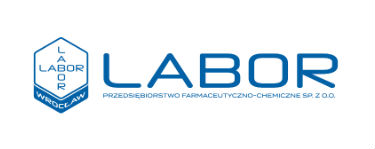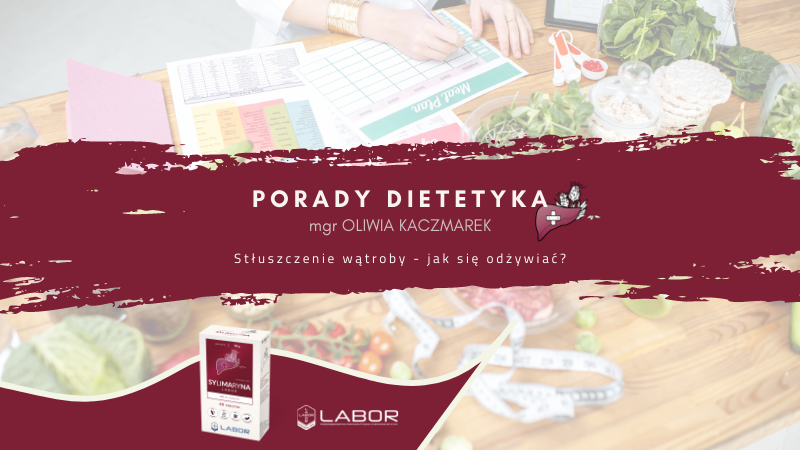The liver is the largest gland in the human body and has many functions. It is responsible, among others, for the metabolism of proteins and carbohydrates, the storage of glycogen, vitamins (A, D, K, B12) and minerals (iron, copper) and detoxification of the body from harmful substances.
Of the many liver diseases, fatty liver disease is the most common disease. It is a disorder where triglycerides (fat molecules) accumulate in the cells of the liver (hepatocytes). We divide fatty liver into two types: alcoholic and nonalcoholic (NASH), which belong to the group of nonalcoholic fatty liver disease (NFLD). Factors leading to the development of alcoholic fatty liver disease are primarily alcohol consumption, as well as an inadequate diet and genetic predisposition. Non-alcoholic fatty liver disease occurs most often in people who provide an excessive amount of calories with their diet, eat especially fatty foods, and in people suffering from metabolic disorders (obesity, diabetes) or after poisoning with fungi and toxins.
Fatty liver disease may also occur in cases of rapid weight loss, long-term protein malnutrition, long-term parenteral treatment or in the event of endocrine dysfunction (Cushing’s disease, pregnancy).
Untreated disease can cause liver damage and its inability to perform its metabolic functions, and consequently lead to serious complications such as fibrosis, inflammation and cirrhosis of the liver.
SYMPTOMS
Usually the disease is asymptomatic. The most common symptoms include:
– anorexia
– fatigue, weakness
Pain in the upper right abdomen
– feeling full
– feeling of pain after fatty foods
– flatulence
TREATMENT
Treatment of fatty liver must take into account the elimination of damaging factors. One of the basic conditions for improving health is a change in lifestyle, taking care of a proper diet and physical activity, and in the case of alcoholic fatty liver disease, alcohol withdrawal is necessary.
DIET
Diet therapy in liver diseases aims to provide all the necessary nutrients needed to maintain proper metabolic changes. Diet components should compensate for deficiencies and support the regeneration of liver cells. The diet should be easy to digest, varied and guarantee the maintenance of the proper body weight. It is recommended to eat regular, small-volume 4-6 meals a day. In the case of fatty liver diseases, it is important to properly prepare dishes that should be steamed, boiled, stewed and baked in foil or parchment, without the addition of fat. However, the basis of soups and sauces should be vegetable stock.
Protein
Proteins affect the process of renewal of liver cells, so the menu should be based on products that are a source of wholesome protein: milk and its products (skim milk, natural yogurt, kefir, buttermilk, low-fat cottage cheese), soft-boiled chicken eggs or scrambled eggs steamed, lean meats (turkey or chicken, veal, rabbit, lean beef) and lean sea fish (cod, trout, pollock, zander, flounder).
Fat
Easily digestible fats are recommended, which are well tolerated and improve the taste of the food (rapeseed, sunflower, linseed, soybean oil, olive oil, fresh butter or soft spreadable margarines). You should exclude fats with a high smoke point from your diet: tallow, lard.
Carbohydrates
Due to the frequent occurrence of metabolic diseases, i.e. obesity and diabetes, whole grain products (graham bread, buckwheat, brown rice) will be a good choice, which are characterized by a low glycemic index (GI) and do not rapidly increase postprandial glycemia. In the case of frequent occurrence of flatulence and diarrhea, coarse grain products should be excluded from the diet and replaced with wheat bread, barley groats, semolina, white rice, instant oat flakes. Easily digestible sugars with a high GI (honey, jams, sweets) should be eliminated from the menu. They lead to an increased synthesis of triglycerides in the liver and cause increased fatty liver processes.
Vegetables and fruits
These products are a source of many vitamins and minerals that eliminate deficiencies of these ingredients and support the work of the liver. Ripe fruit and vegetables eaten raw, in the form of juices or purees and in the form of stewed, boiled or baked, without peel and seeds are especially recommended. Recommended vegetables include: carrot, parsnip, parsley, celery, zucchini, pumpkin, beetroot, lettuce, tomato. The fruits indicated are: apples, bananas, peaches, apricots, citrus fruits and berries. Cruciferous, bulbous and legume vegetables should be excluded from the diet.
Drinks
In the case of fatty liver disease, it is forbidden to consume alcohol, drink strong coffee and tea, cocoa and sweet carbonated drinks. Still water, freshly squeezed juices are recommended, as well as weak teas and herbal infusions (especially milk thistle).
Milk thistle
Milk thistle (Silybum marianum) is one of the most popular and valued herbs used as an aid in the treatment of liver diseases. It contains silymarin, which has a strong detoxifying, anti-inflammatory, antioxidant effect and helps to rebuild liver cells by increasing the rate of protein synthesis. This compound is used in the production of dietary supplements (Sylymarin LABOR), which support regenerative processes in the liver.
|
RECOMMENDED |
FORBIDDEN |
|
Skim milk and its products (kefir, natural yoghurt) |
Fatty milk, cream, full-fat cheese, cream cheese |
|
Soft-boiled chicken eggs |
Hard-boiled chicken eggs, fried in oil |
|
Lean types of meat and fish (chicken, turkey, veal, pike perch) |
Fatty meats (pork loin, algae, sausage), fried, smoked fish, canned fish and meat, pates |
|
Rapeseed, sunflower, linseed, soybean oil, olive oil, fresh butter or soft spreads |
Tallow, lard, lard. |
|
Carrots, parsnips, parsley, celery, zucchini, pumpkin, boiled potatoes, beetroot, lettuce, tomato |
Cabbage, cauliflower, onion, garlic, peas, beans, lentils, soybeans, broad beans, fresh cucumber, vegetables marinated in vinegar, mushrooms |
|
Soups cooked on vegetable stock |
Soups cooked on meat stock |
|
Mild spices: basil, thyme, lovage, dill, parsley, marjoram |
Hot spices: pepper, hot pepper, horseradish, garlic, vinegar, mustard, |
|
Weak tea, still water |
Alcohol, strong coffee and tea, cocoa, carbonated drinks |
|
Jelly, mousses, biscuits |
Sweets and cream cakes, bars, chocolate |
AUTHOR: mgr Oliwia Kaczmarek
BIBLIOGRAPHY:
? Ciborowska H., Rudnicka A., DIETETYKA ŻYWIENIE ZDROWEGO I CHOREGO CZŁOWIEKA, Wydanie IV PZWL Wydawnictwo Lekarskie, 2019 Warszawa
? Bukol-Krawczyk K., Niealkoholowe stłuszczenie wątroby ? leczyć czy nie leczyć?,Forum Zaburzeń Metabolicznych 2010, tom 1, nr 1, 66?72
? Kołota A., The possibilities of silymarin extract use in alcoholic liver disease ? a literature review, Alcohol Drug Addict 2017; 30 (2): 137-154




